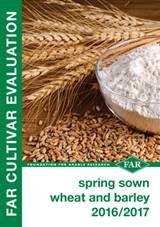
Cultivars reported to be affected include Delphi, Reliance, Saracen and Wakanui (see below for cultivar resistance ratings). Tan spot was problematic in a small number of crops in 2013 and these were where wheat was sown into wheat stubble (second or more continuous rotation positions). Like Septoria tritici blotch (STB), tan spot is a stubble-borne disease, however, since its primary ascospores travel only short distances from the previous infected wheat stubble, infections tend to occur earlier and be more severe in wheat sown into wheat stubble.
Cultural control by crop rotation and stubble management tends to be more effective in controlling this disease than STB. Work conducted by FAR Australia in 2014 in the Riverine Plains area of Victoria has found very low levels of disease at the initial assessments where stubble was burned or buried.
In 2013, FAR generated the first New Zealand data on the influence of fungicide product and rate on tan spot infection levels and yield. This data illustrated yield responses of up to 25% from the control of tan spot, and suggested that prothioconazole (Proline) should be a key component in control strategies for this disease.
In trials where different fungicide products and rates were applied following an initial standard spray at GS33, prothioconazole mixed with pyraclostrobin (Comet) or the SDHI bixafen (Aviator) gave the best disease control and yield response.
Photo: Nick Poole (FAR)



 Classifieds
Classifieds

